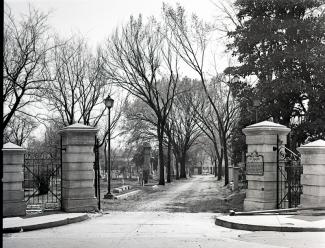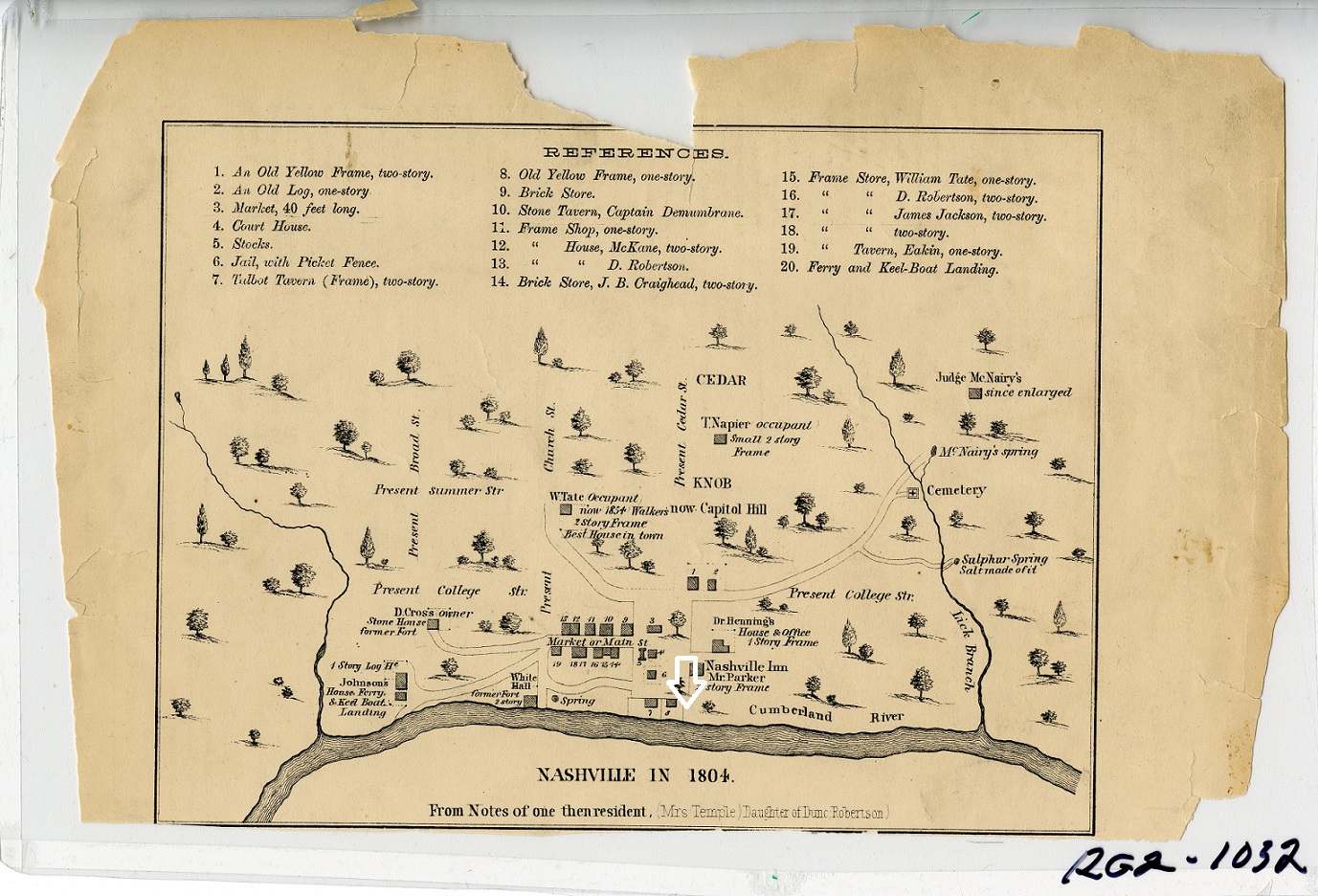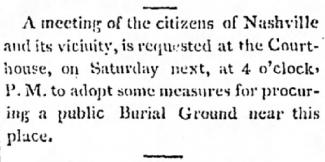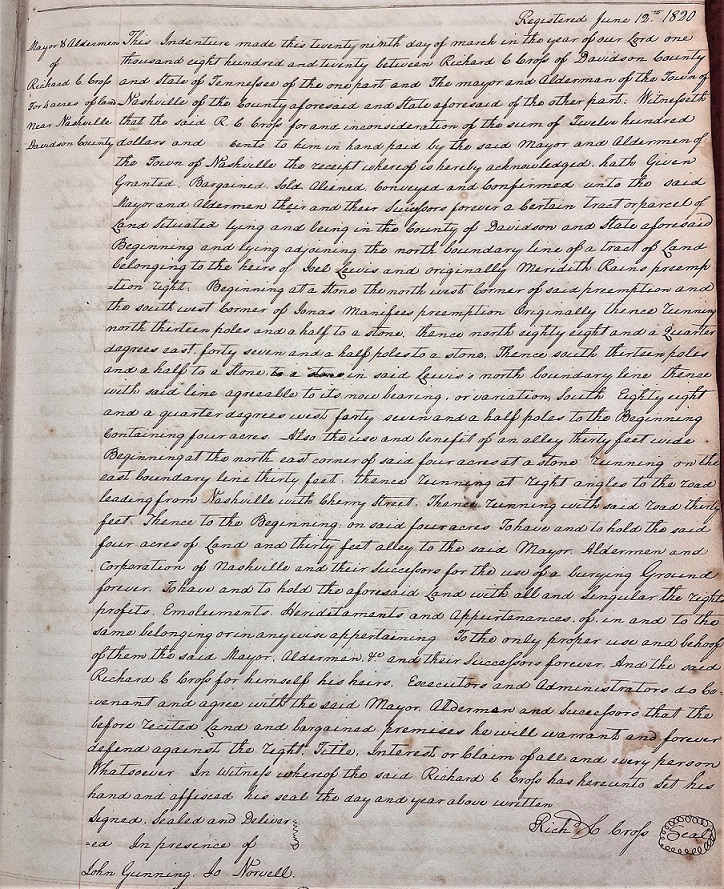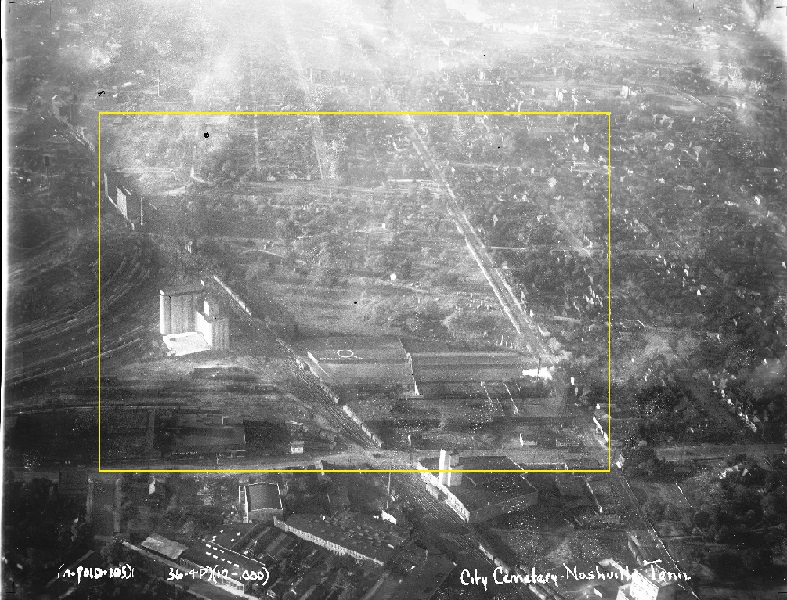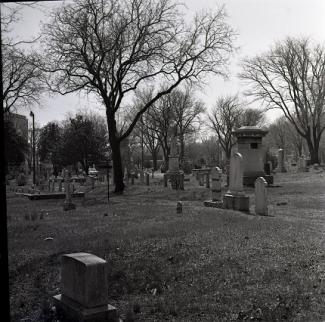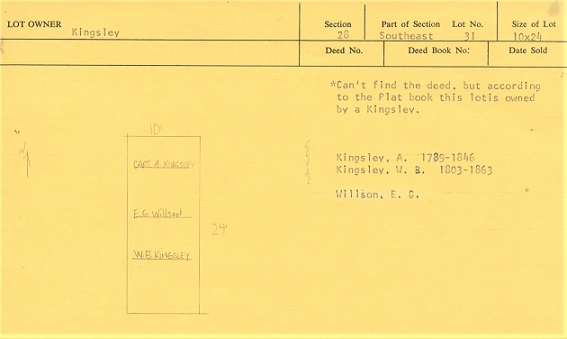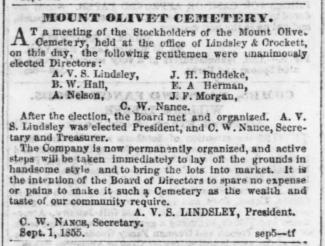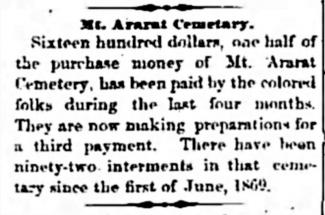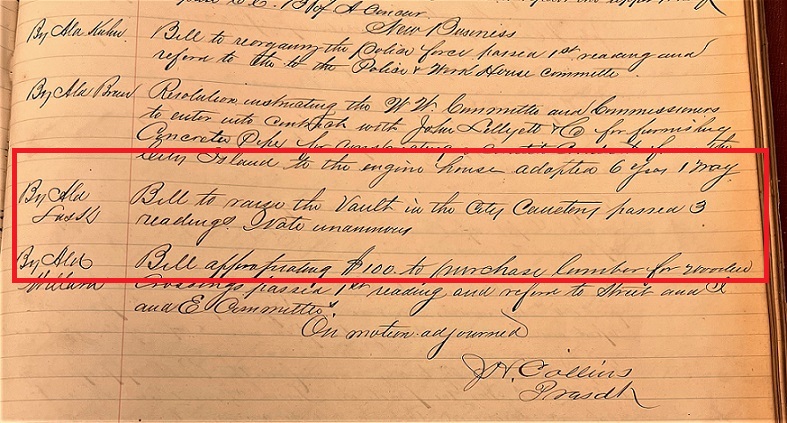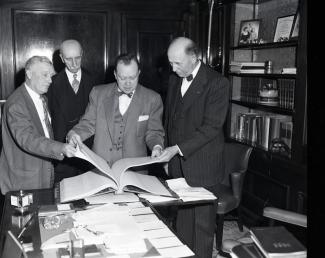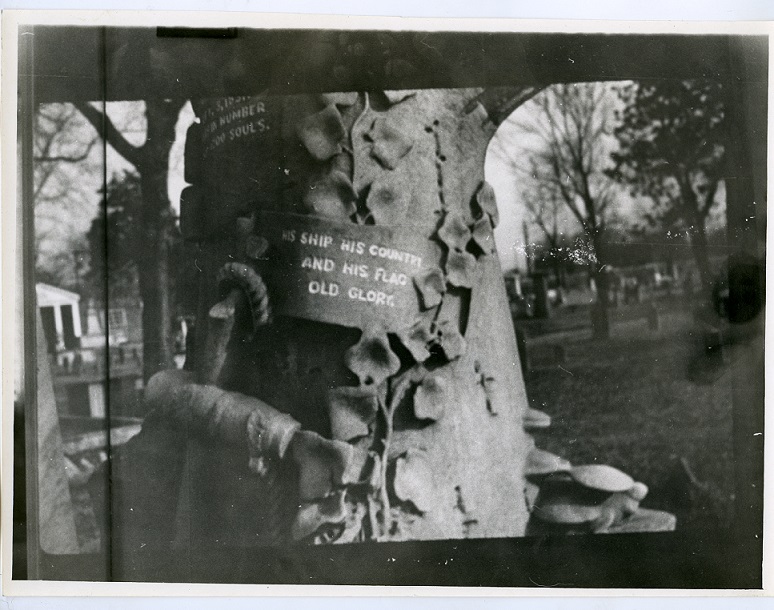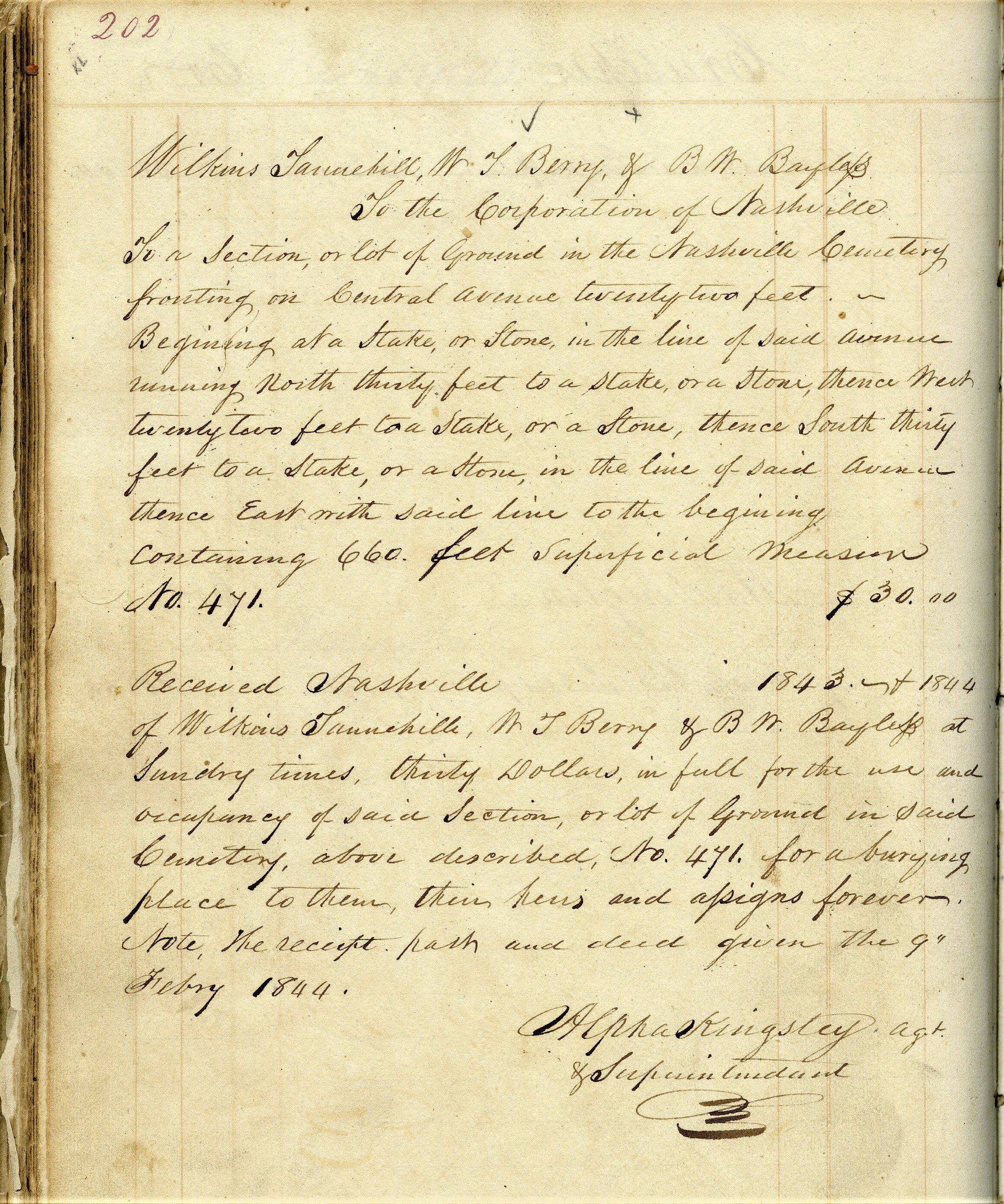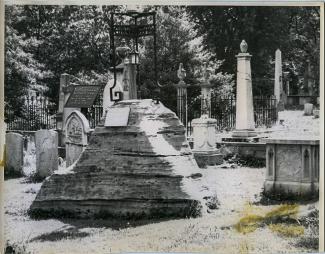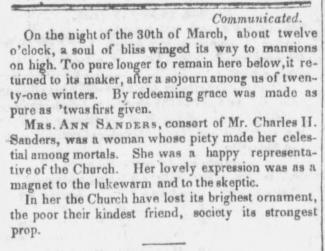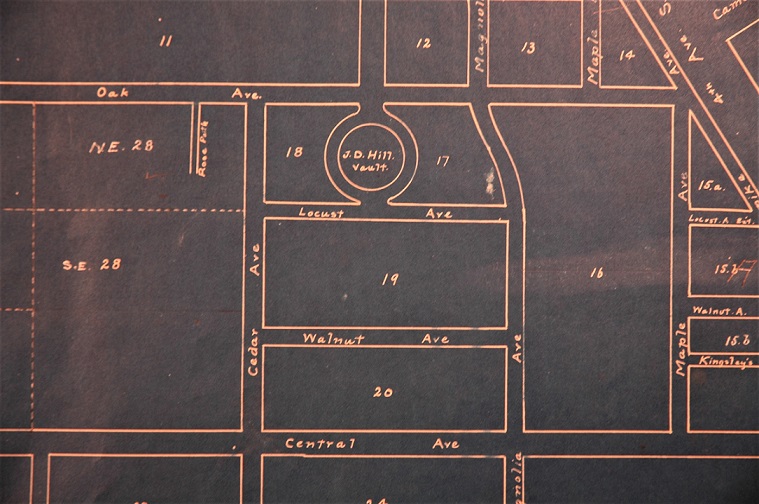
A walk among the tombstones at the Nashville City Cemetery means a walk back through a full-scope of Nashville's past. Most don't realize this significance as they drive down 4th Ave S, but it's been there 200 years now, and will be for 200 more.
The Nashville City Cemetery was not the city's first public burial ground, nor the second, but it has been the permanent one since 1822, making it the oldest public cemetery in the city. And many of the city's former prominent residents rest there now, and collectively tell a variety of narratives about the city's history.
If you're curious about the history of this cemetery, plus want to learn about one of the legends of the grounds, please read on...
Early Nashville Burials: "Bring Out Your Dead!"
When Nashville was just a young pup of a city (only roughly 38 years old), it had already outgrown its physical roots (for burials at least). 1822 was a time in Nashville's past when the city was truly beginning to see its future potential of being more than mostly farmland - it was going to hold its own as an economic and commercial center of the South. That growth meant a physical change in many ways, especially this changing concept of where to bury their deceased.
The Nashville City Cemetery was not the city's first public cemetery, nor their second. While there is no evidence of the first cemetery's location, it is believed to have been located right within the city near the Cumberland River bank and the former public square. The second site was said to be located "...on a hill overlooking the French Lick in the area later known as the Sulphur Spring Bottom." To be a little bit more specific, it was located roughly where the baseball park sits today since it was near the former Sulphur Dell Park, south of Jefferson and between 4th and 5th Aves.
See the 1804 map below with the white arrow indicating approximately where the first burial ground was located.





